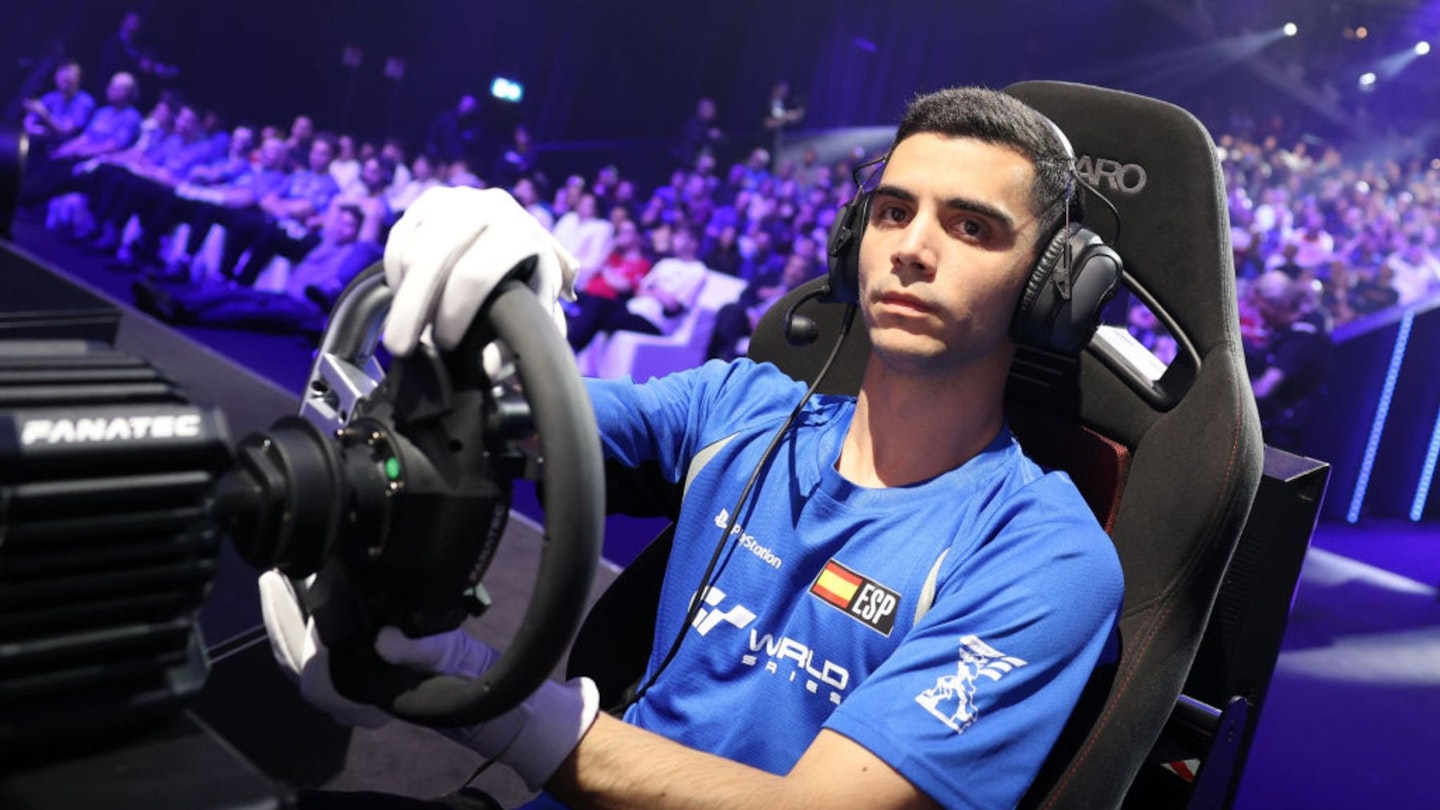To effectively simulate a motor race at home, of all the constituent parts of a sim racing rig, no element bears greater dependence than sim racing seats. It’s from the chair that your entire sim racing experience will take place – every crest, every bend, all the exultation and all the perspiration.
As with any other part of a sim racing setup, the more time and money invested into it, the more immersive experience is offered in return. However, if you’re building yours from the ground up and wish to focus most of your spending on a specific feature ASAP, we recommend channelling your efforts on the chair first.
Along with your racing seat, you may want to invest in some other racing kit to improve your drive. Check out our other articles on the best gloves, wheels and socks for sim racing games.
The best sim racing seats at a glance:
Editor's pick: Playseat Evolution PRO ActiFit - buy from Amazon.
Best foldable seat: Playseat Challenge X Logitech Edition - buy from Amazon.
Best lightweight seat: Next Level GT Racing Lite - buy from Amazon.
Sim racing seats are the main meat of an optimum sim racing setup. Ultimately, you need somewhere to sit before installing the best sim racing wheel, pedal, and gear shifter setups. Read on to see our favourite sim racing seats to suit every budget.
The best sim racing seats
The best sim racing seat
 Via Playseat
Via PlayseatThis example from renowned sim seat manufacturer PLAYSEAT is a good place to start for first-time buyers. With its upright, almost rally car-style position – complete with head stabilisers for an additional touch of authenticity – this is a relatively short length in comparison to other models – just 98cm long. Weighing just 20.6kg, this is also one of the more portable models on the sim racing seat spectrum, though we especially like this example for its genuine Alcantara finish.
Not only does this material look great while fulfilling the race car seat brief, but it’ll also keep you in your seat as you hurtle along thanks to its aptitude for grip. This race seat also features an adjustable pedal plate distance, steering wheel plate height and angle base.
Pros
- Light and portable
- Great entry-level seat
Cons
- Cheaper entry-level options are available
Best for professional sim racers
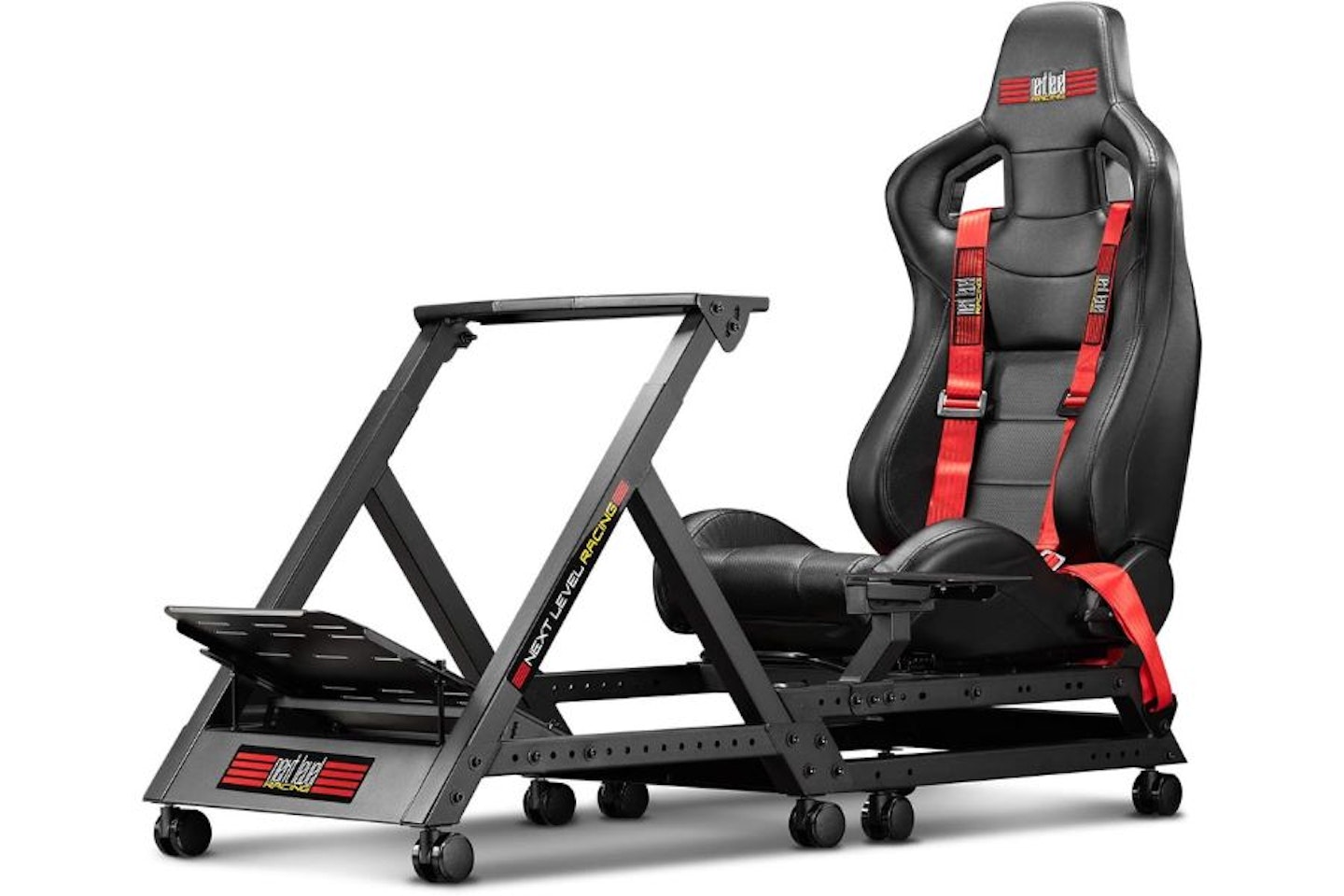 Via Next Level
Via Next LevelThis racing seat from Next Level Racing would make a great seat upgrade for those looking to take their racing more seriously. Designed for the professional sim racer, the steering wheel, pedal and gear knob plates all are distance adjustable on this racing seat, so you can set it up exactly to your liking for a comfortable experience.
The wheel plate of this rig has been pre-drilled for all major wheelbases, including models from Thrustmaster, Logitech and Fanatec, as well as direct drive wheels thanks to its supportive rigidity.
We especially like this rig for its interchangeable feet, from caster wheels for effortless movement out of the way when not in use to flat adjustable feet so you can find the perfect level balance.
Pros
- High quality
- Great adjustability
- Lots of room for accessories
Cons
- Playseat example possibly better value
- Difficult to store
Best foldable racing sim seat
 Via Playseat
Via PlayseatFoldable gaming chairs are much more convenient and practical than a fixed setup. They're not as engaging to sit in, nor look at stylish. But if you're limited on space, they're a fantastic solution to all problems.
The Logitech Edition of the Playseat Challenge X can fit a range of sim wheel and pedal setups, and the tube running around the base of the seat is designed to fit the Logitech G29 gear shifter. It weighs just 13kg and has a total of six seating positions designed for any style of racing.
Pros
- Quite good value
- Adjustable positions
- Easy to store away when not in use
Cons
- Not as rigid as a fixed seat
- Main deck won't fit every accessory
Best NASCAR themed sim seat
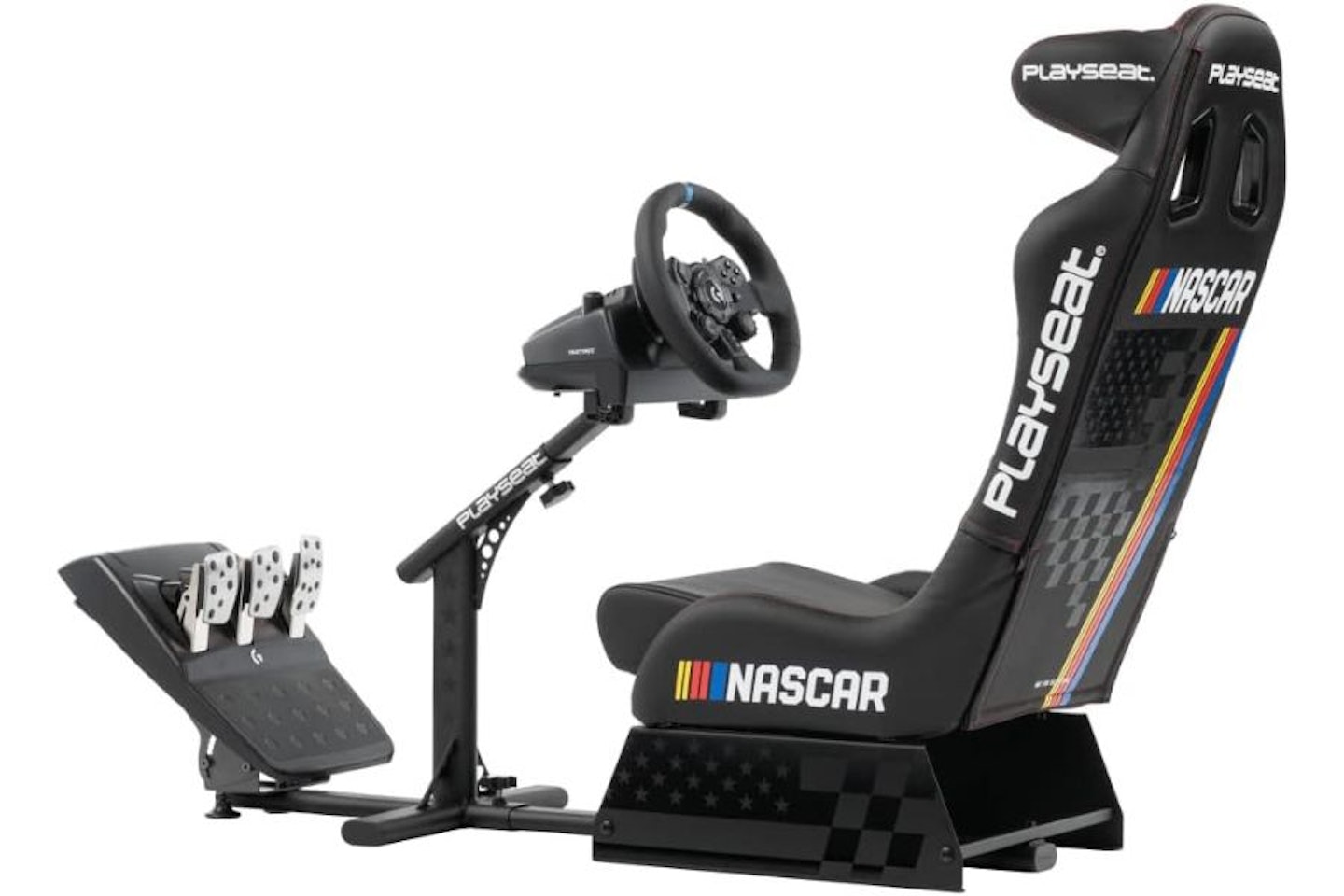 Via Playseat
Via PlayseatFor any NASCAR fanatics out there, it doesn’t get any more authentic than this. Playseat has designed its Evolution seat to simulate the feeling of being in an NASCAR from the moment you sit down.
The seat itself folds down into a neat block, which makes things a little easier when you need to store it away in the shed or garage for a bit.
Pros
- Authentic NASCAR Design
- Fully adjustable
- Comfortable to sit in
Cons
- Not to everyone's taste
- You'll struggle to find gear lever space
Best lightweight seat
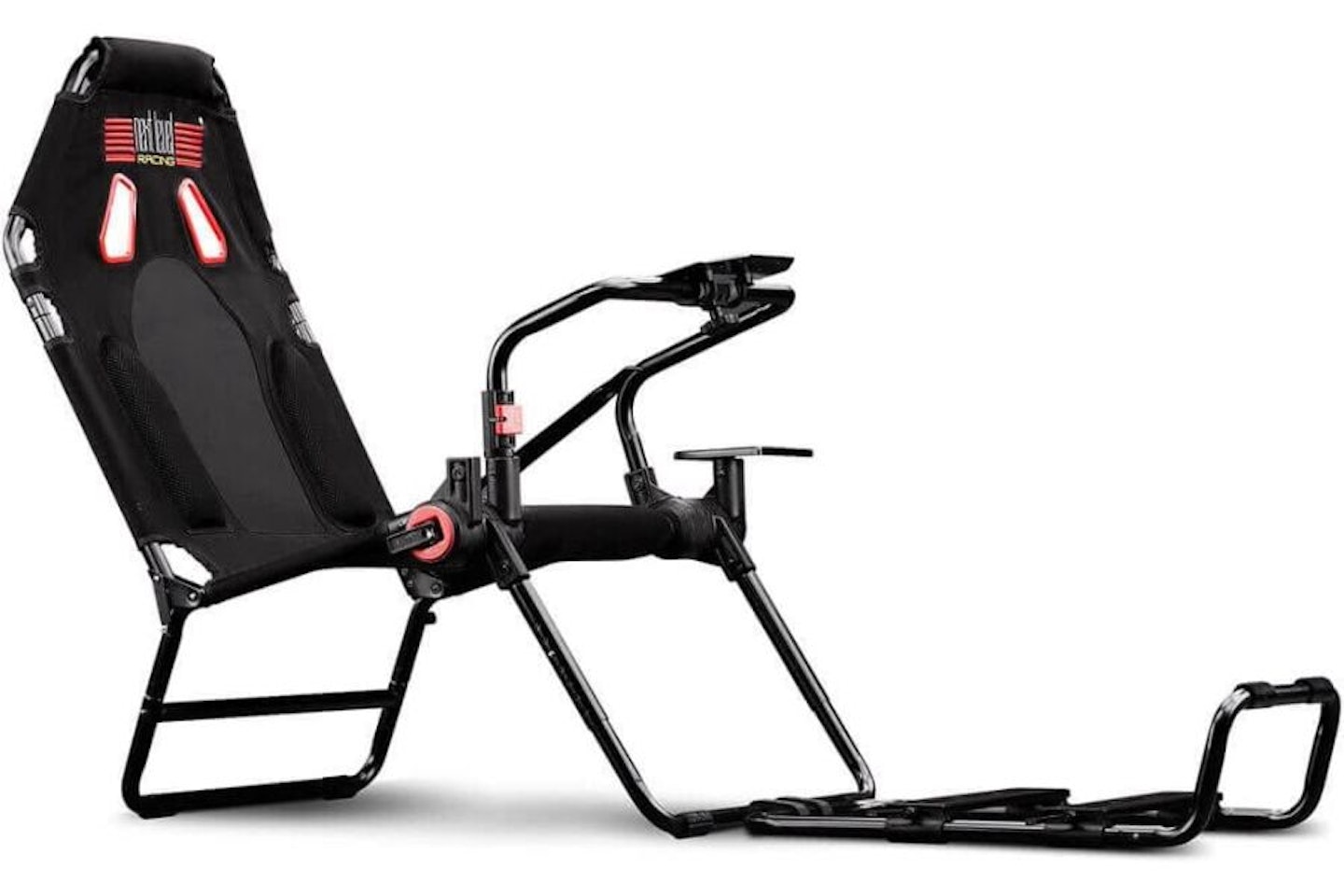 Via Next Level
Via Next LevelContrasting with the previous example, this racing seat is about as light and portable as they come. While this chair may look like something you’d erect at Hunstanton beach on Bank Holiday weekend, it’s built from quality materials for comfort and durability.
Say your proposed sim racing space would also double up as a function room or working basement, this racing chair would make the perfect choice as an easily collapsible alternative thanks to NLR's advanced seat adjustment hubs, capable of withstanding up to 150kg of force without breaking a sweat.
Don’t be fooled by the slender build: with its gear shifter support and wheelbase compatibility, this is still a quality item for a very reasonable price.
Pros
- Easy to erect
- Collapsible and easy to store away
- Great entry-level seat
Cons
- Won't offer the same back support as other racing chairs
Best entry level seat
(Save £20)
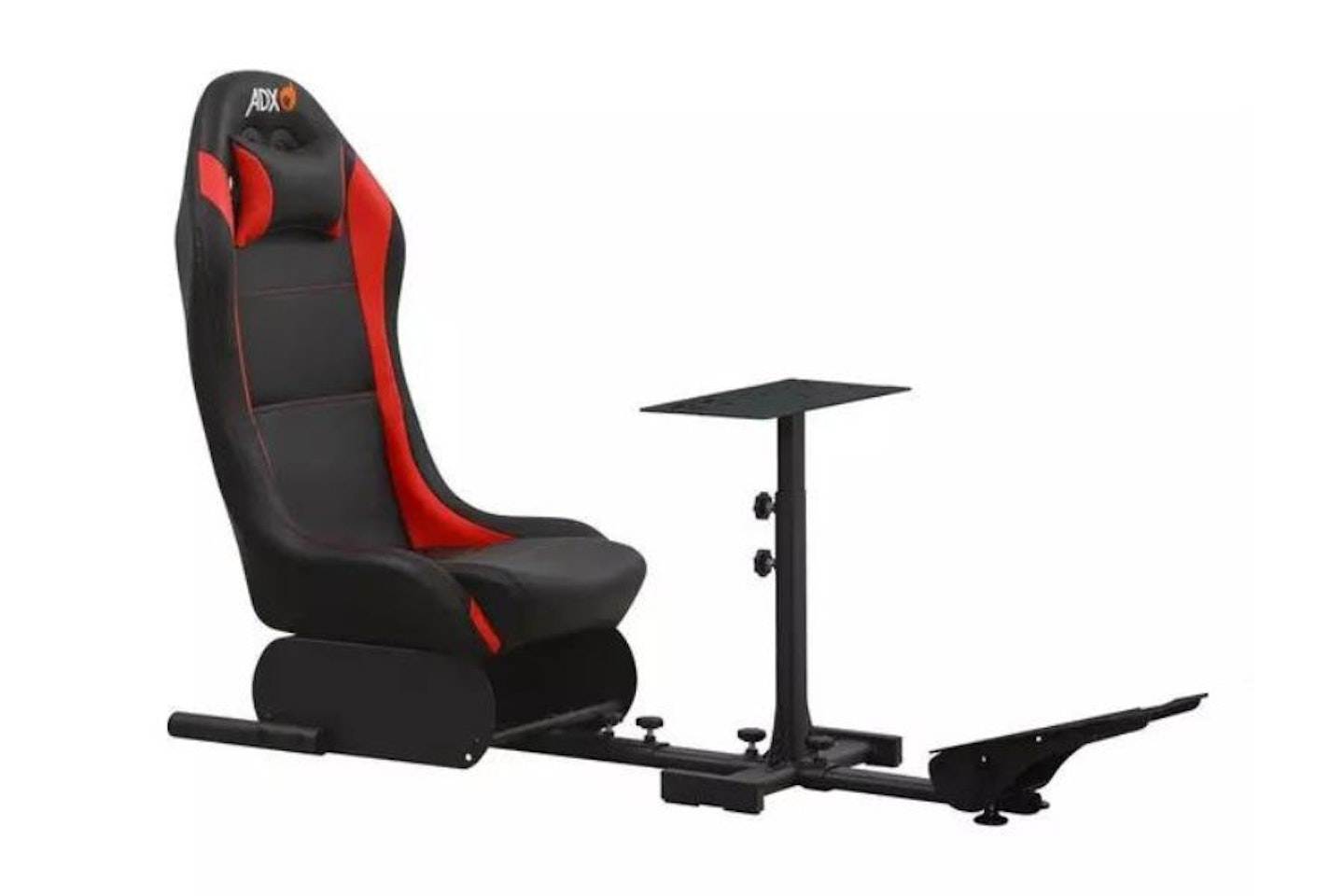 Via ADX
Via ADXwww.currys.co.uk
If you’re building your sim racing rig on a budget or perhaps you’d like to ease yourself into the sim racing world gradually, check out this racing seat from ADX. The Firebase 22 model features a soft cushioned seat and neck cushion for comfort over long stints and is collapsible to you can get it out the way when not in use.
Like the rest of the more expensive examples on this list, this racing chair features adjustable height and wheel plates as well as a universal compatibility design so you can use it with most steering wheels and pedal sets. All for under £150.
Pros
- Great value
- Easy to set up and put away
- Headrest is a neat touch
Cons
- Direct drive wheels can cause damage to it
- No gear shifter support
The best F1 sim racing seat
 Via Playseat
Via PlayseatHaven't yet found the perfect setup for driving in F1 games? Look no further because Playseat offer a low-slung, Formula One-style sim racing seat which can fit any wheel from the likes of Logitech and Thrustmaster on it.
The frame is padded in black vinyl and comes with Playseat's ForceLock system which allows for easy adjustment for the seat, wheel, and pedal positions without having to faff around too much. It's quite large and especially long, so before you enhance your F1 sim experience, you might want to make sure there's enough room to place it.
Pros
- Realistic F1 seating position
- Compatible with almost every F1 sim wheel
- Easy adjustment
Cons
- Quite large
- Very overkill for most casual gamers
Things to remember with sim racing seats
Depending on the style of the seat, the entire unit could be anywhere from 60 to 160cm long, up to 50cm wide and 80cm tall. Your designated sim racing room should be commodious enough to comfortably accommodate the unit with enough space to get by and to fit your monitor stand. It's best check the size of your racing seat before buying.
Along with the size of a seat, its weight should also factor into your selection process. Some seats are designed to be portable, easily moveable, or even collapsible to clear room space when not in use. Figure out where your seat will reside first, determine whether its presence in that spot will be permanent or periodic and then buy accordingly before putting your racing gloves on.
Racing chairs are also available in an array of different styles. For example, a Formula One-style chair would feature a reclined seat and raised pedals to better simulate the driving position when playing F1 simulator games, while most others will be more upright to suit most other driving needs.
What is direct drive?
It’s been mentioned here, but what is a direct drive wheel? It’s something that’s seen on the racing wheels used by serious sim racers (i.e. expensive ones). Most racing wheels are connected to the motor shaft via a belt, which helps give the wheel more torque than its motor can provide. By using a belt, the system negates the need for a more powerful motor and keeps costs down. For most users, it’s fine.
Direct drive wheels are connected directly to the motor shaft. The intention is to give the user much greater feedback and detail than a belt-driven system can provide. It works but requires a more powerful motor, which means a direct drive wheel is more expensive.
Aaron Hussain is a commercial content writer at Bauer Media writing for Parkers and CAR. He is obsessed with classic cars and anything with a fascinating story to tell.
